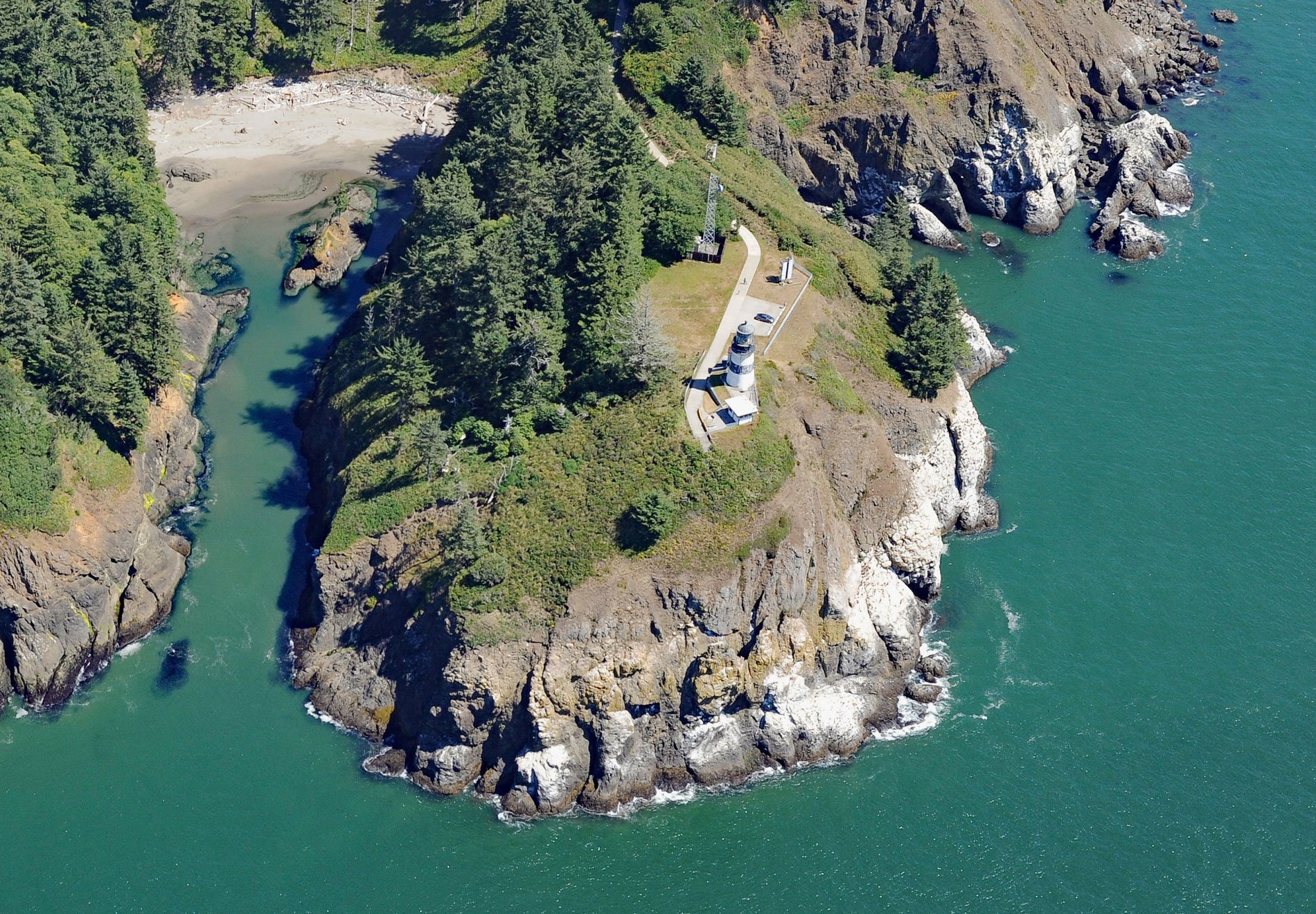Cape Disappointment is a prominent headland and navigational landmark with a historic lighthouse on the north side of the Columbia River, 12 miles (19 km) northwest of Astoria, and 2.2 miles (3.5 km) south of Ilwaco, Washington. The cape was named in 1788 by British fur trader John Meares who was sailing south from Nootka in search of trading opportunities, but after a severe storm, he was forced to turn around just north of the cape, hence, his ‘disappointment’. The headland is formed by erosion resistant rocks of the Crescent Formation that developed during the Eocene and consists of pillowed, columnar-jointed and massive basalt. The Columbia River was discovered on May 11, 1792, by Captain Robert Gray, and named after his ship, the Columbia Rediviva. The river is the largest on the west coast of the U.S., draining a watershed of about 165,760,000 acres (67,080,690 ha) and extends roughly 1,200 miles (1,931 km) from British Columbia to Cape Disappointment. It is also the main source of sediment for the northwest continental shelf and contributes significantly to the Long Beach Peninsula to the north and the Clatsop Spit and dunes to the south.
The north shore of the lower Columbia has been the traditional territory of the Lower Chinook people for at least 2,500 years. Their principal village was at present-day Ilwaco and had other settlements around Baker Bay and north to Willapa Bay. Their neighbors to the east were the Wahkiakum people and to the south were the Clatsop people. Long before contact with Europeans, the Chinook people, with their adept use of canoes, had become established as traders and the chief brokers of trade on the lower river. Their language provided the basis for what became known as Chinook Jargon, used to help various tribes and, eventually, European traders communicate with each other. In 1805, the Lewis and Clark Expedition arrived at Cape Disappointment. A military camp was established at the cape during the American Civil War to protect the mouth of the Columbia River from possible attacks by Confederate raiders or foreign fleets. In 1875, the camp was expanded and named Fort Canby that became part of the three-fort Harbor Defenses of the Columbia River, that included Fort Stevens and Fort Columbia. The fort was decommissioned in the years following World War II, and became a state park in the early 1950s.
Cape Disappointment receives over 2,500 hours of fog a year, making it one of the foggiest places in the United States. The river entrance is difficult to navigate due to the opposing currents from river and ocean that create large breaking waves, especially at the notorious Columbia River Bar. Before the construction of a lighthouse, three prominent spruce trees growing on the cape’s summit were topped to mark the point and the river entrance. A ship could align the three trees from 5 miles (8 km) offshore, then head for the southerly tip of the cape to navigate through the deepest part of the river channel. The Cape Disappointment Lighthouse was first activated on October 15, 1856, becoming the eighth active light on the U.S. west coast. The light was automated in 1973 and is now adjacent to Cape Disappointment State Park. The U.S. Coast Guard Station Cape Disappointment is situated on Baker Bay, adjacent to and upstream from the lighthouse. The station crew members respond to between 300 and 400 calls for assistance every year. Read more here and here. Explore more of Cape Disappointment and Columbia River here:

